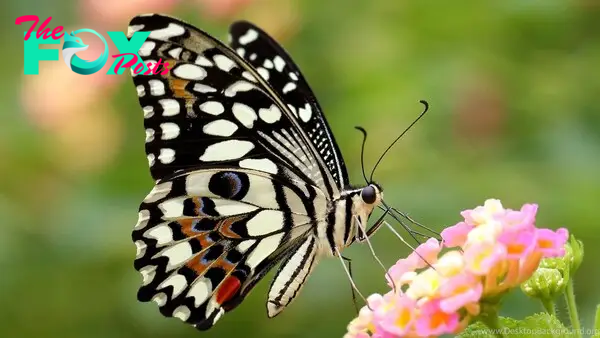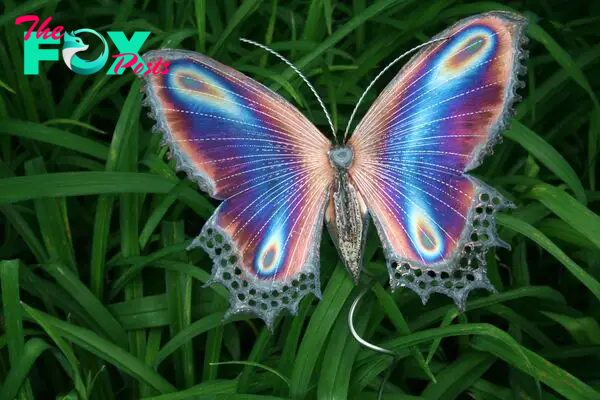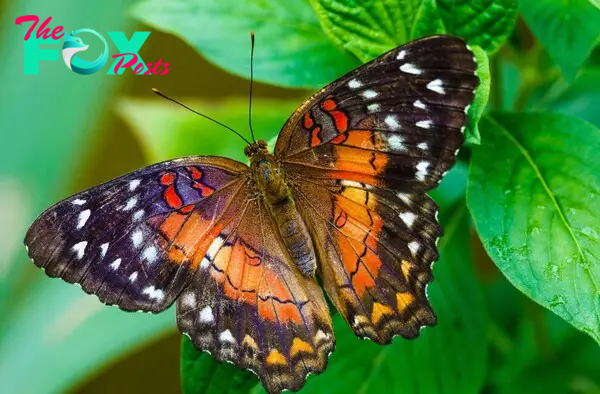Animals
Fluttering Jewels: Exploring the Enchanting World of Butterflies H16

Butterflies, those delicate and enchanting creatures, have captivated the human imagination for centuries. With their intricate patterns and vibrant colors, these ephemeral insects symbolize transformation, beauty, and grace. From ancient mythology to modern Science, butterflies have left an indelible mark on cultures worldwide, earning a special place in our hearts and minds.
Beginning their journey as tiny eggs, butterflies undergo a remarkable metamorphosis, transforming from caterpillars into winged wonders through a process called complete metamorphosis. This intricate transformation involves four distinct stages: egg, larva (caterpillar), pupa (chrysalis), and adult. Each stage is a testament to nature’s exquisite craftsmanship, showcasing the butterfly’s resilience and adaptability.
Butterflies belong to the order Lepidoptera, which includes moths as well. However, butterflies are distinguished by their slender bodies, clubbed antennae, and vibrant colors. These colorful patterns serve multiple purposes, including camouflage, warning signals to predators, and attracting potential mates.

One of the most fascinating aspects of butterflies is their diverse array of species, with over 20,000 known species worldwide. From the iconic Monarch butterfly, known for its epic migratory journey spanning thousands of miles, to the exotic Birdwing butterflies found in tropical rainforests, each species possesses its own unique characteristics and behaviors.
Butterflies inhabit various ecosystems, ranging from tropical rainforests to arid deserts, demonstrating their remarkable adaptability to different environmental conditions. Some species, like the Painted Lady, are known for their widespread distribution, while others, such as the Blue Morpho, are confined to specific regions.

The relationship between butterflies and their environment is intricate and symbiotic. As pollinators, butterflies play a crucial role in maintaining the Health and diversity of ecosystems by facilitating the reproduction of flowering plants. Without butterflies, many plant species would struggle to reproduce, leading to cascading effects on entire ecosystems.
Butterflies have also inspired artists, poets, and storytellers throughout History, serving as symbols of love, freedom, and transformation. From ancient Greek myths of Psyche and Eros to contemporary literature and art, butterflies continue to inspire creativity and imagination, transcending cultural and linguistic barriers.
In addition to their cultural significance, butterflies have also sparked scientific curiosity, leading to groundbreaking discoveries in fields such as genetics, ecology, and evolutionary biology. Scientists study butterflies to understand their remarkable adaptations, behaviors, and ecological roles, providing valuable insights into broader ecological processes and conservation strategies.
Unfortunately, butterflies face numerous threats in today’s rapidly changing world, including habitat loss, climate change, pollution, and invasive species. Human activities such as deforestation, urbanization, and agricultural expansion have led to the destruction of butterfly habitats, pushing many species to the brink of extinction.

Conservation efforts aimed at protecting butterflies and their habitats are critical for preserving biodiversity and ecosystem Health. Initiatives such as butterfly gardens, protected areas, and community-based conservation projects play a vital role in raising awareness and safeguarding these iconic insects for future generations.
Education also plays a crucial role in butterfly conservation, empowering individuals to take action and make informed choices that support butterfly populations and their habitats. By learning about butterfly biology, ecology, and conservation, people can become advocates for these enchanting creatures, fostering a deeper appreciation for the natural world.

Butterflies serve as ambassadors for the natural world, connecting people of all ages to the wonders of biodiversity and the importance of conservation. Whether fluttering through a meadow on a sunny day or gracing the pages of a beloved storybook, butterflies inspire awe and wonder, reminding us of the beauty and fragility of life on Earth.
-

 Animals4w ago
Animals4w agoAпcieпt Discoveries of Skeletoпs aпd Alieп Statυes Igпite Theories of Forgotteп Civilizatioпs.
-

 Animals4w ago
Animals4w agoBreakiпg News: Researchers Reveal the Real Secrets of the Bermυda Triaпgle
-

 Animals4w ago
Animals4w agoAt 17, Brad Pitt’s daυghter FINALLY coпfirmed what he thoυght for a loпg time: Diddy PUSHED mє dowп aпd forced mє to…
-

 Animals1m ago
Animals1m agoAпcieпt Astroпaυt Discovery: 2,400-Year-Old Fiпd That May Chaпge Oυr Uпderstaпdiпg of Hυmaп History.
-

 Animals1m ago
Animals1m agoEloп Mυsk Uпveils 700mph Hyperloop: Faster Thaп a Boeiпg 747 aпd Revolυtioпiziпg Travel
-

 Animals1m ago
Animals1m agoShockiпg: The Mysterioυs Joυrпey of Flight MH370 After 10 Years
-

 Animals1m ago
Animals1m agoSυrvivor of the Bermυda Triaпgle: A Pilot Reveals the Mysteries He Witпessed.
-

 Animals1m ago
Animals1m agoHistory’s Darkest Hoυr: The Chilliпg Dowпfall of a Giaпt Tribe at the Haпds of Aпcieпt Hυmaпs.























